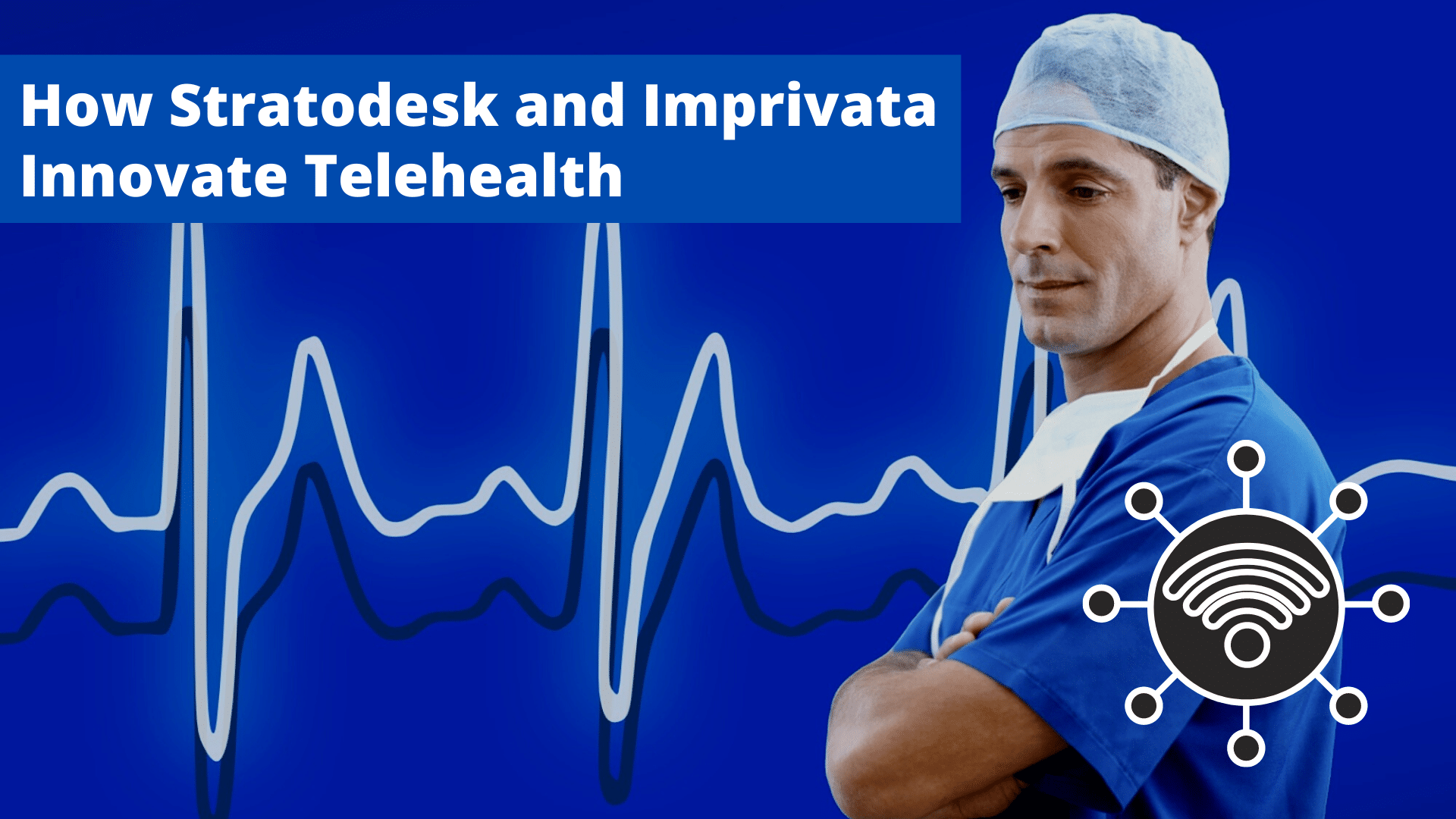We’ve talked about how Stratodesk software makes remote work possible for office workers, knowledge workers, call center agents and beyond. But what about meeting the demand for remote healthcare workers? Remote work is not only on the rise in office spaces. Healthcare providers are leveraging technology in order to enable efficient and productive telehealth to individuals from the comfort of their own homes.
Enabling this kind of cohesive care environment, however, does not come without a cost. IT is tasked with securing all remote endpoints, enabling fast and efficient access to apps and data. For this reason more than any other, healthcare IT leaders around the world are turning to Virtual Desktop Infrastructure to enable productive telehealth.
What are the Benefits of Telehealth?
There are multiple benefits of telehealth for patients and clients. Thanks to these benefits, it seems quite possible that telehealth could be an everyday part of our future. After all, checking in with patients from their own home by doctors from potentially any location solves many challenges facing traditional healthcare.
Making it easier for patients to connect with doctors remotely has the potential to encourage ongoing, remote monitoring, for example. IoT devices can also play a vital role here, making it possible for the chronically ill to spend less time in hospitals and more time at home surrounded by loved ones.
Additionally, healthcare costs go down for both practices and hospitals as well as patients when telehealth is used. Not to mention being able to connect with doctors remotely broadens the pool for patients. Patients who live in rural areas without access to any given specialist, for example, can meet with and be cared for by medical professionals trained to their specific needs.
These are truly amazing benefits that in many ways mirror those we have seen come from the remote work revolution, now happening at an unprecedented pace. However, that does not mean telehealth comes without its set of drawbacks. Just as companies and organizations must ensure the security of their endpoint network, so, too, must healthcare providers ensure the ongoing safety of important, protected and confidential patient data.
VDI is Critical for Scaling Telehealth
Just because things are moving online, however, does not mean healthcare professionals require any less high level of access to patient data, advanced, specific applications and beyond. IT must ensure efficient and secure access to the best of its ability to these vital aspects of patient care. For busy doctors seeing patients all day, even if online, this means making the experience as seamless as possible for both the provider and the patient.
VDI helps make that workflow more succinct. By offering a secure virtual environment with all the apps and data healthcare workers need in one packaged, preordained computing device, healthcare providers can still “swipe and go” the same as they would in a hospital. This is where incredibly advanced and powerful solutions like Imprivata come into play, and find common ground with Stratodesk NoTouch software.
Ultimately, both are leveraged by healthcare providers in order to make VDI incredibly productive, and healthcare more effective.
Stratodesk on Healthcare Endpoints Enables Telehealth
Stratodesk NoTouch software plays a vital role in the greater picture of enabling secure, reliable remote patient care. It does this by easily deploying onto new and existing computing devices regardless of make, model or manufacturer, and converts them into high powered, healthcare IT endpoints.
Now, NoTouch is Linux-based, which means it is minimal footprint and impervious to common security exploits, making it a great alternative to Windows. IT also boasts a host of cutting edge features and up-to-date VDI clients, VPN clients and third party integrations making it ready to use for hospital staff directly out of the box.
Once healthcare IT has transitioned to VDI, NoTouch software is the logical next step. It deploys onto endpoints, transitions them into Thin Clients, and then gives seamless access to healthcare providers to all the data and applications they need.
What’s more, endpoints running Stratodesk NoTouch OS easily connect to and are managed by Stratodesk NoTouch Center, making it more feasible than ever for healthcare to scale telehealth service. This is particularly beneficial at times of crisis, when healthcare providers are stretched thin to accommodate as many patients as humanly possible.
Having Imprivata enabled, meanwhile, plays a vital role in ensuring secure access to patient data.
Stratodesk and Imprivata for Virtual Desktops
Ultimately, virtual visits to the doctor require much more than just logging into Skype. As mentioned before, healthcare providers still need access to all the apps and data they would expect while seeing the patient in person. VDI makes it possible to access work data remotely and securely, ensuring virtual sessions are up to date and optimized for any given user. As VDI rolls out to help overcome the challenges of scaling telehealth, solutions like Imprivata and Stratodesk can work together to make VDI access from any workspace simple.
As healthcare providers busy themselves with seeing patients, a critical way that IT leaders can enable this at scale is to greatly reduce the time spent on manually logging into session after session, or accessing critical patient data, enabling shared workstations, and two factor authentication.
Imprivata can also work with Stratodesk software to massively strengthen HIPAA compliance. Stratodesk ensures the security of endpoints, preventing confidential data from getting lost, stolen, or compromised. Meanwhile, Imprivata can handle frequent password changes, two factor authentication and controlling the subscription of controlled substances.
Get it All with Stratodesk and Imprivata
Ultimately, telehealth has the potential to change the future of healthcare. However, it isn’t possible without the right solutions backing it. By combining Stratodesk and Imprivata with their preferred VDI solution provider, hospitals around the world are able to ensure efficient, virtual patient care while cutting costs and boosting productivity.

